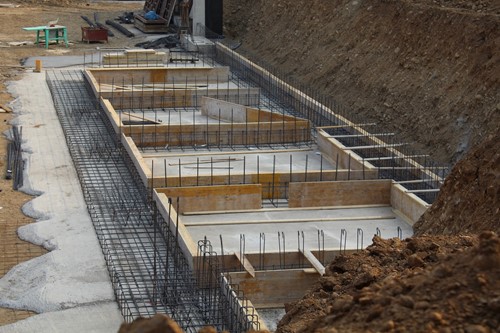Email: [email protected]

For centuries, builders have used concrete in foundation building for structures of all shapes and sizes. Concrete foundations are still the most common type of foundation for homes, commercial buildings and everything in between. There are several types of concrete foundation you should know if you’re planning to build a home. Here is a basic guide to the different types of concrete foundation and their benefits:
T-shaped foundations are commonly used in areas with freezing temperatures. Builders find the frost line in the ground and construct the footing at that level. After constructing the foundation walls, the concrete slab is laid on top.
Slab-on-grade foundations are made of a single layer of concrete. The layer is poured thicker at the edges and gets thinner toward the top of the grade. Wire mesh is used in constructing these foundations to reduce risk of concrete cracking.
Frost protected foundations are used for heated structures. They use two layers of insulation around the outside of the foundation wall to contain heat and let it rise into the building regardless of frost.
Poured concrete foundations are the most common type of foundation used for homes and residential buildings, while much larger structures require additional support. They are affordable and offered by countless contractors and construction companies across the globe. Here are some additional key benefits of concrete foundations:

Active in residential brokerage since 1985, Michael enjoys a loyal following of past buyers and sellers. Prior to entering brokerage, he studied culinary arts and managed restaurants in the Boston area. Born and raised in Newton, Michael is very familiar with the Greater Boston area. His seven-day-a-week commitment to his profession serves his clients and customers well. His educational background includes The Johnson & Wales Culinary Institute, The Lee Institute for Real Estate, and The Tom Hopkins and Floyd Wickman Sales Training courses.
In recognition of his completion of the prescribed courses in real estate practice and ethics, Michael has earned the distinguished GRI (Graduate, Realtor Institute) designation. He continues his long-standing membership in the National Association of Realtors and is an avid fly fisherman, musician, and outdoor enthusiast.
Michael was awarded the International President's Circle Award for sales expertise, market knowledge, and dedication to clients for 2020 and 2021. In 2022 and 2023 he was awarded the International Presidents Elite Award, representing the Top 2% of Hammond Residential & Coldwell Banker Agents Worldwide, for demonstrating exceptional sales production, ambition and his commitment to the Real Estate Industry.